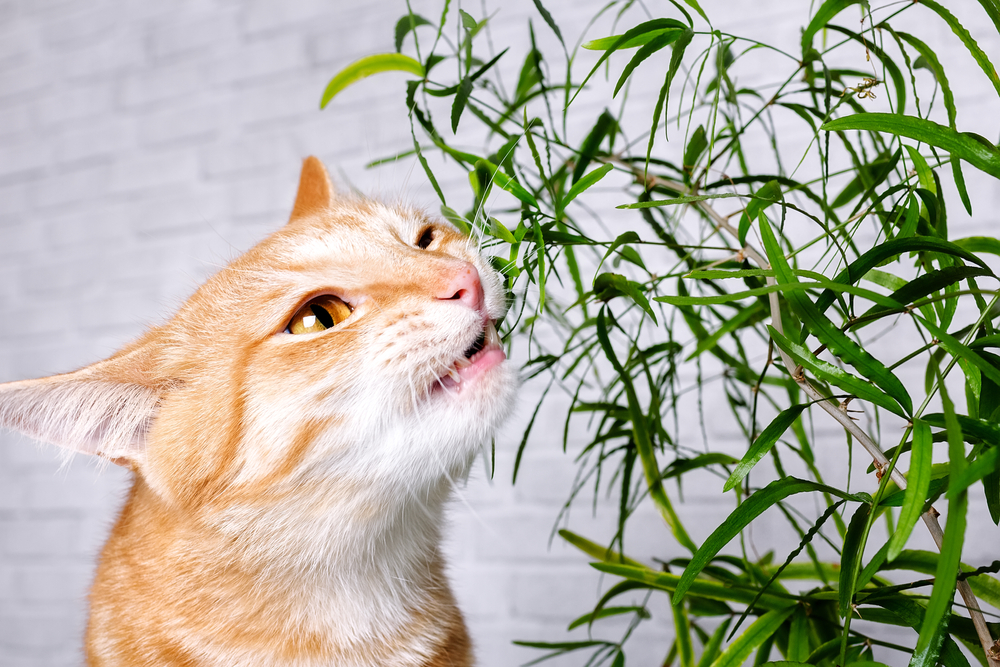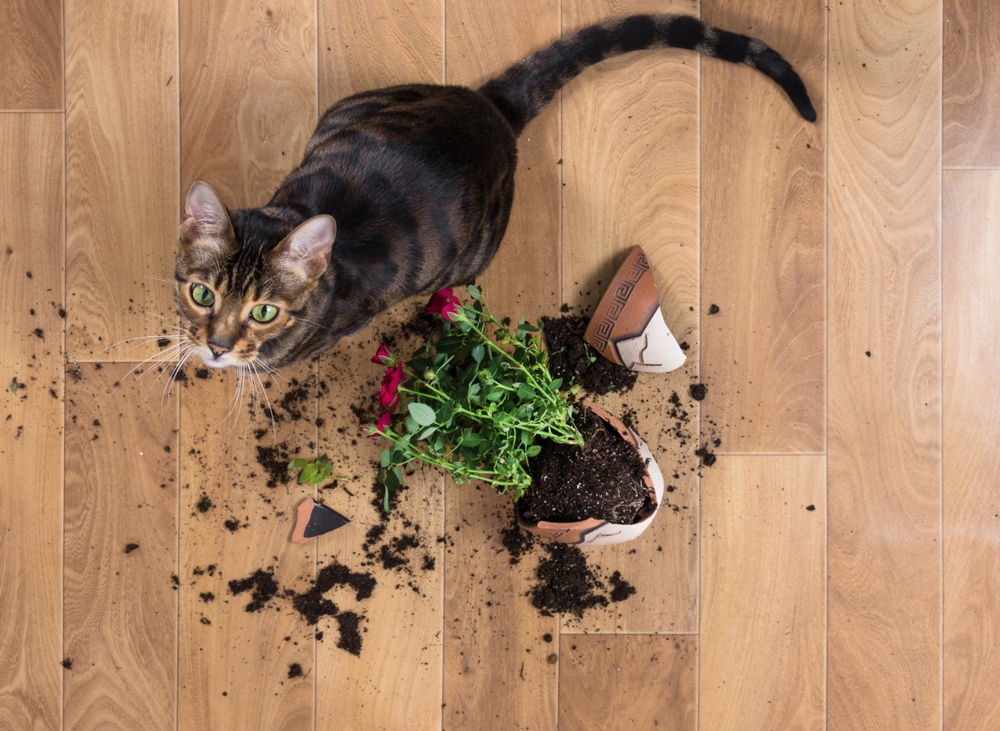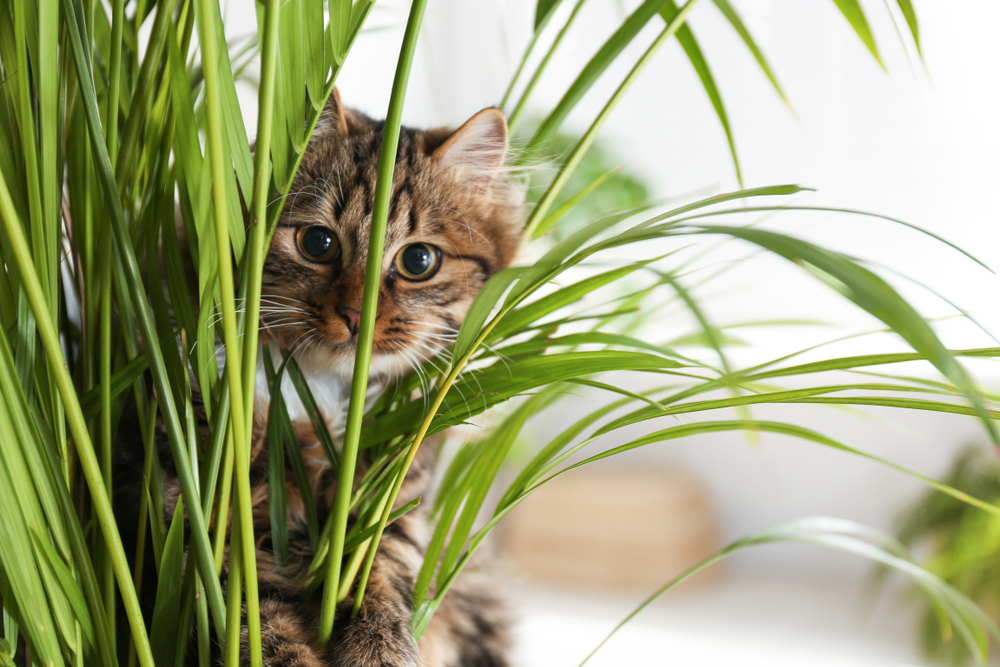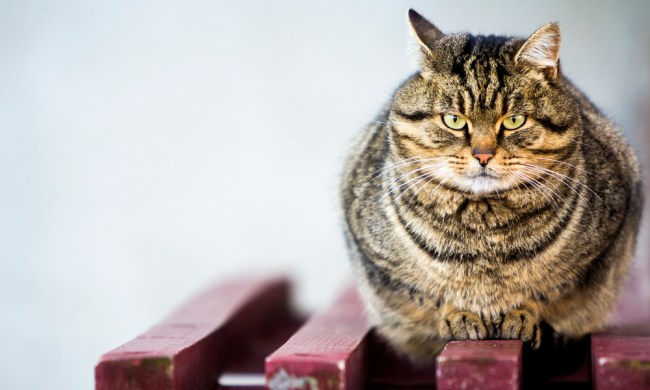Two of the most wonderful things in life are plants and cats, but they don’t always go hand in hand. While plenty of indoor plants are safe for cats, there are numerous plants that could make your cat violently ill — or worse. In 2018, the ASPCA’s Animal Poison Control Center ranked plants as one of the top 10 reasons pet parents contacted their hotline. Before you begin adding greenery to your home decor, you should know which plants are toxic to cats you’ll need to avoid. Here are eight toxic plants you should never grow if you have cats.

1. Autumn crocus
Characterized by beautiful purple leaves that fade to white at the center of the bloom, the autumn crocus is absolutely gorgeous. The autumn crocus is also known as a meadow saffron or a naked lady. Unfortunately, it’s also highly toxic to cats, dogs, and horses due to its alkaloid colchicine content. It may take several days for symptoms of ingestion to show up, but you may see vomiting, bloody diarrhea, respiratory difficulties, drooling, and seizures. If enough of the plant has been consumed, it can result in kidney damage, liver damage, and potentially even death.
2. Azaleas
A member of the rhododendron family, azaleas come in a variety of stunning colors that run the gamut from white to purple. No matter how much they work with your color scheme, you should avoid azaleas — and other members of the rhododendron family — at all costs. The consequences could be deadly if your cat takes even one bite of an azalea. Symptoms of azalea poisoning include weakness, drooling, vomiting, and diarrhea. Even more seriously, azalea poisoning may cause your cat to slip into a coma, develop hypotension, suffer from central nervous system depression or even cardiovascular collapse.
3. Cyclamen
Cyclamen, also called Persian violets and sowbread, is the genus of over 20 species of plants. The dainty blooms come in white, pink, red, and lavender, and while the roots and tubers are the most toxic part of this plant, even the flower petals contain toxic saponins. If small quantities are ingested, your cat may show signs of diarrhea, vomiting, and drooling. In larger quantities, cyclamen poisoning can cause irregular heart rate, irregular heart rhythm, seizures, and even death.
4. Daffodils
Daffodils, also called jonquil, narcissus, and paperwhite, are members of the Narcissus genus. Known for their bright color and unique shape, daffodils are also incredibly toxic to cats. Each part of the plant contains lycorine, but the bulbs are the most toxic part. Symptoms of daffodil poisoning typically include a tender abdomen, vomiting, diarrhea, and drooling. Some cats suffer from low blood pressure, respiratory distress, convulsions, and a form of irregular heartbeat known as cardiac arrhythmia.
5. Dieffenbachia
A member of the Araceae family, dieffenbachia may also be labeled as charming dieffenbachia, gold dieffenbachia, variable dieffenbachia, dumb cane, giant dumb cane, spotted dumb cane, exotica perfection, and tropic snow. No matter what it’s called, you should never introduce this common houseplant into your space if you have cats. The toxic element in this plant is insoluble calcium oxalate crystals, which lead to oral problems like drooling, vomiting, a burning sensation in the mouth, and difficulty swallowing. While dieffenbachia poisoning usually isn’t fatal, it’s extremely painful for your fur baby.
6. Kalanchoe
Also called devil’s backbone, mother of millions, the mother-in-law plant, and a chandelier plant, kalanchoe comes in white, yellow, green, salmon, red, pink, lilac, orange, and bicolored variations. While they’re undoubtedly beautiful, these stunning blooms contain bufodienolides, which are toxic to cats, dogs, and birds (people, too!). The most common symptom of kalanchoe poisoning is gastric distress, but these succulents can also cause heart arrhythmias.
7. Lilies
Many plants are named “lily,” but the ones you need to look out for are Asiatic lilies, day lilies, Easter lilies, Japanese show lilies, red lilies, stargazer lilies, rubrum lilies, tiger lilies, Western lilies, and wood lilies. Lilies are extremely toxic to cats, though the reason for their toxicity varies from one lily to another. If your fur baby manages to ingest pollen from a lily, she may suffer from renal failure. We don’t recommend planting lilies outside for this reason. It’s much too easy to inadvertently bring the pollen into your home, putting your cat’s life at risk.
8. Tulips
Although we love their vast array of colors and flutelike shape, tulips contain tulipalin A and B. The most dangerous part of the plant is the bulb, but ingesting any part can cause depression, drooling, diarrhea, tremors, and vomiting. Distant relatives of deadly lilies, tulips — and hyacinths — are part of the Liliaceae family and should never be kept in a home with cats.

Numerous plants and flowers are poisonous to cats, and though the level of toxicity varies, your cat’s health matters more than any plant. Choose your plants carefully using the ASPCA’s Toxic and Non-Toxic Plant List as a guide, and contact your vet immediately if you believe your cat has ingested a plant. If you want to add greenery to your home without risking your cat’s safety, consider cat-friendly plants and flowers like African violets, Boston ferns, or jasmine.




